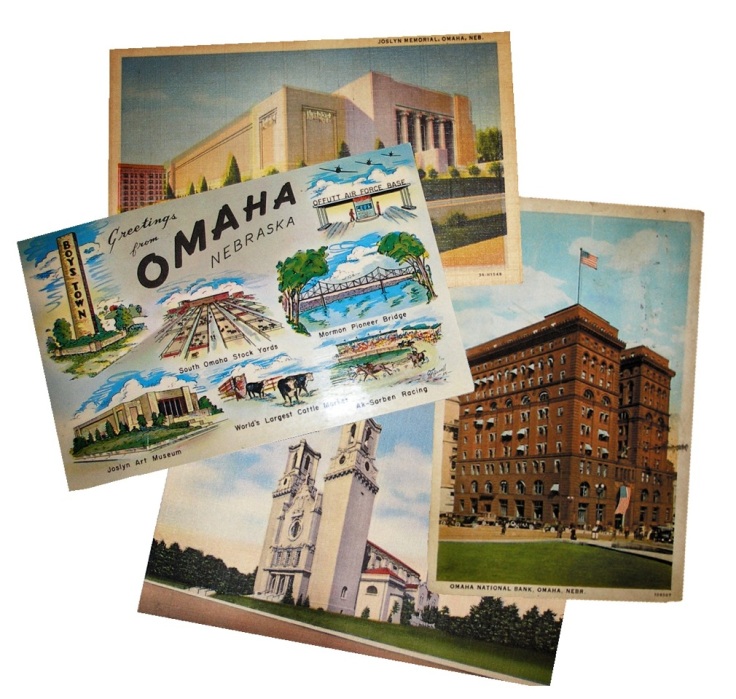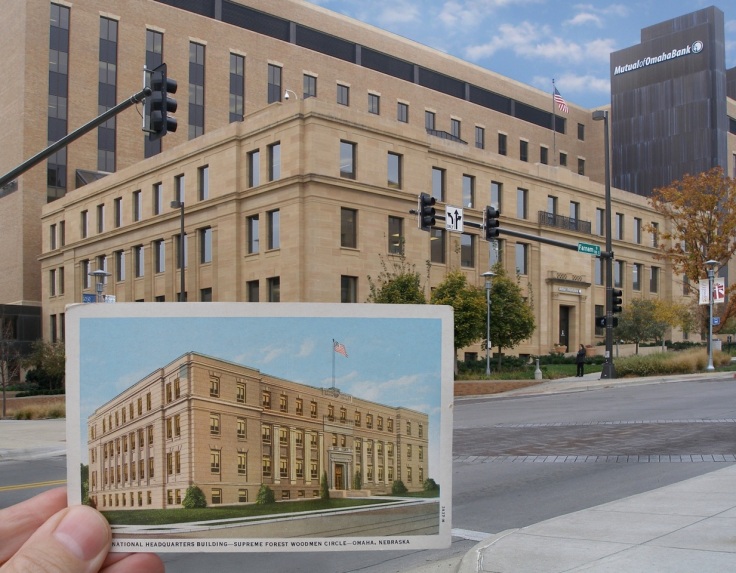The world is changing; the towns, cities, even villages are changing more and less faster. The old buildings are restored, or modified for another destination, or… demolished. New buildings are rising where the old buildings have been demolished. Yes, the life is going on, even the cities’ life.
A photography is not changing, so a postcard can tell something about a town or city’s past.
Steve Raglin is a graphic artist from Omaha, USA, and he is also a postcard collector. Starting from a hobby, he developed a project, called „Omaha then and now”, an original project meaned to keep Omaha city’s history alive.
Steve was so kind to answer at my invitation and further he will describe the project. So, let’s „listen” what Steve says about his project:
”
I started collecting postcards as young child when traveling with my family on summer vacation. I would seek out colorful and unusual postcards at gas stations or gift shops at each stop along the way. Some I would keep for my collection. Others I would send to friends with a greeting like, “We saw a huge armadillo today. Everything in Texas really is big!”.
Now, decades later, my postcard collection is also quite big and has evolved to be more about historic structures. I live in Omaha, Nebraska where I work as a graphic artist. I live in the downtown area where many old structures still stand. You can’t help but appreciate how much character they add to the city’s skyline. Their intricate detail and classic styling is well beyond what is found in most buildings created today.
Photography is also a hobby of mine so I decided to create a “then and now” project using the postcards. I started taking photos of them held in front of the old structures as they appear today, trying to match the exact same angle. More than just appreciating how the old buildings look, I wanted to people to consider preservation.
Too many classic old buildings have been torn down to make way for new structures. I wanted to push the idea of repurposing old structures, and how preservation is sensible and can help maintain some of the city’s history. Ultimately, I have taken more than fifty photos for my project using my postcard collection. I designed a website to showcase the photos: PostcardsOfOmaha.com , which features several galleries showing the old postcards held in front of current buildings. Each has a description telling when it was built and how the building is used today. One of the galleries shows postcards of old buildings that, unfortunately, have been torn down.
I’m excited to say the website is quite popular with many thousands of visitors since it was created about two years ago. People write to me sharing their memories about the buildings. Others have even wanted to give me their own postcards to add to my collection. I encourage anyone interested in postcard collecting and architecture to try a similar project in your own city. My website has opened the eyes of many people. I’ve been told they don’t just quickly walk or drive by old buildings, but now slow down to consider their classic style and appreciate how much history stands behind those old walls.
”
You can see more about „Omaha then and now” project at this website:
http://www.postcardsofomaha.com/
I hope also that Steve’s idea turned into a real project will inspire many other people to discover and appreciate their city’s architectural values. And someday… maybe we will see more projects such this one.
At the end, I want to thank you, Steve for your kindness and your materials!



Lasă un comentariu